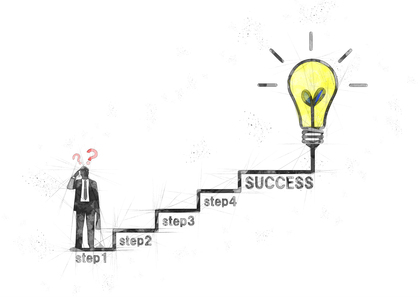
How to write a project proposal? 5 Essential Steps
Writing a persuasive project proposal is a fundamental skill for professionals across diverse industries. Whether seeking funding, approval, or support for a project, a well-written proposal is the key to conveying your ideas effectively. In this guide, we'll explore the steps to creating a persuasive project proposal that captures attention and secures buy-in.
What is a project proposal?
A project proposal is a formal document designed to present a plan for a specific project, outlining its objectives, scope, methodology, and anticipated outcomes. It serves as a roadmap that communicates the project's importance, feasibility, and potential impact.
At its core, a project proposal aims to present a compelling case for the initiation of a project, whether it's seeking approval, funding, collaboration, or support from stakeholders, clients, or decision-makers. It acts as a persuasive tool, articulating the rationale behind the project and substantiating why the project is worth pursuing.
The proposal typically starts with an introduction or executive summary, providing a concise overview of the proposed project. It then delves into detailed sections that define the project's purpose, objectives, and scope, elucidating the problem statement or need the project intends to address.
Moreover, a project proposal outlines the methodology or approach planned to achieve the project's objectives, including the strategies, timelines, milestones, and resources required. It often includes a breakdown of the budget, funding sources, cost estimates, and financial considerations.
Understanding the types of project proposals
There are various types of project proposals, including:
Internal Proposals: Aimed at proposing projects within an organization to address specific needs or improvements.
Solicited Proposals: Requested by external entities, such as government agencies or businesses, in response to a specific call for proposals.
Unsolicited Proposals: Initiatives proposed to potential clients or stakeholders without a prior request.
Formally Solicited Proposals: Proposals responding to a detailed request for proposals (RFP) or a specific set of requirements.
Grant Proposals: Requests for funding or support from grant-giving organizations or foundations.
What are the 5 Essential Steps for Writing a Persuasive Project Proposal?
1. Project Background:
The project background section serves as an introduction, providing essential context and information about the proposed project. It includes details about the organization or individual proposing the project, their expertise or experience in the field, and a brief overview of previous relevant projects or achievements. This section aims to set the stage for the proposal by establishing credibility and demonstrating a clear understanding of the project's context.
2. Identify the Problem:
This section delves into the core issues or challenges that the proposed project aims to address. It involves a detailed analysis and identification of the problem, emphasizing its significance, impact, and urgency. Presenting compelling data, statistics, or real-life examples helps in highlighting the severity and relevance of the problem. Providing a thorough understanding of the problem encourages stakeholders to recognize the necessity and relevance of the proposed project.
3. Present a Solution:
Once the problem has been clearly defined, this section proposes a viable solution or approach to mitigate the identified problem. It outlines the methodology or strategy that the project intends to employ to resolve the issue. This includes innovative ideas, approaches, or initiatives that address the problem effectively. The solution proposed should be realistic, feasible, and aligned with the identified problem, showcasing its potential to resolve the issue.

4. Define Project Goals
In this section, clearly articulate the specific goals, objectives, and outcomes that the proposed project intends to achieve. These goals should be SMART (Specific, Measurable, Achievable, Relevant, Time-bound) to provide a clear direction for the project's execution. Detailing the expected outcomes helps stakeholders understand the intended impact of the project and how success will be measured.
5. Define Resources Needed:
Outline the resources, including human, financial, technological, and material resources, required for successful project implementation. Detail the budget, funding sources, staffing needs, equipment, and any other necessary resources. Demonstrating a comprehensive understanding of the resources needed reinforces the project's feasibility and provides assurance to stakeholders regarding its practicality and viability.
Crafting a compelling project proposal involves these essential steps, ensuring clarity, coherence, and persuasiveness throughout the document. By meticulously addressing each step, individuals and organizations can create persuasive proposals that effectively communicate the project's significance, propose viable solutions, and garner support for successful project implementation.
Tips for Writing a Persuasive Proposal
Tailor your proposal to the audience's needs and interests.
Use visuals, charts, graphs, or even non-verbal cues to illustrate key points effectively.
Emphasize the project's feasibility and potential impact.
Highlight your expertise and credibility in the field.
Incorporate testimonials or case studies to strengthen credibility.
Strengthening Proposals with Project Management Tools like Teamioo
Project management tools such as Teamioo can enhance project proposals by offering centralized project planning, task management, delegation, collaboration features, and real-time progress tracking. Utilizing such tools demonstrates a proactive approach to project management, showcasing organizational readiness and efficiency.
In conclusion, mastering the art of writing a persuasive project proposal involves meticulous planning, effective communication, and attention to detail. By following these essential steps and incorporating best practices, individuals and organizations can craft compelling project proposals that garner support, funding, and opportunities for impactful projects. Embrace these guidelines, leverage project management tools like Teamioo, and embark on the path to creating winning project proposals that captivate stakeholders and propel your initiatives forward.